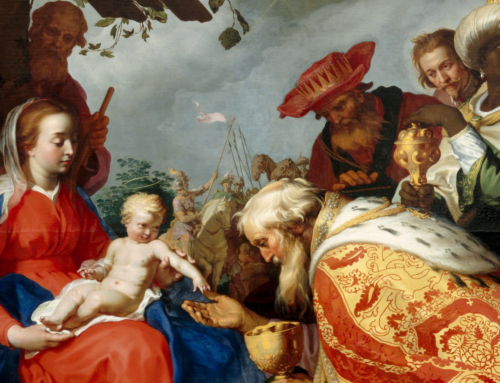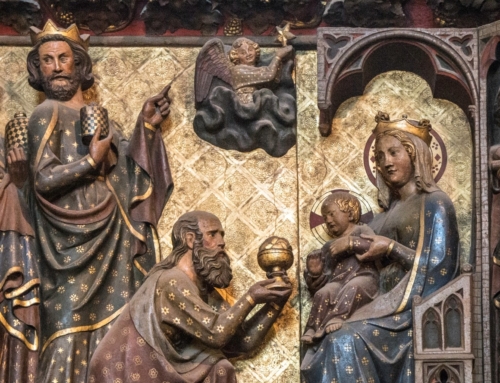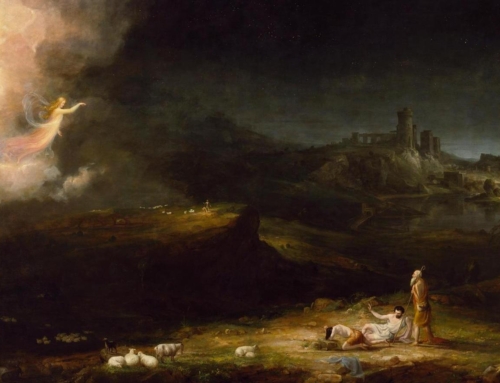Two months ago, Star Wars fans around the world were thrilled to learn that JJ Abrams would direct the next portion of the Star Wars saga. Part of this stems from the accolades won as director of the new Star Trek movies, but also discernible are the millions of voices that suddenly cried out in jubilation…and then breathed a collective sigh of relief. After all, the past 15 years have been hard for those who love Star Wars.
As we approach Christmas, we pass another milestone: the 35th anniversary of the release of the Star Wars Holiday Special. This two hour program was aired only once. Despite its inclusion of legends Bea Arthur and Art Carney (in addition to the entire Star Wars cast), it was panned as a failure. One high profile critic dubbed it the worst two hours in television history. How could such a project, riding on the popularity of the movies, and packed with such a high profile cast, be considered such a failure?
Based on the limited footage I have seen and the searing reviews available, it seems that the entire two hour experience was a series of disjointed vignettes. As great as some of the clips were—for example, the debut of the legendary bounty hunter Boba Fett—most had little or nothing to do with the primary story arc: namely, Chewbacca’s efforts to get home to his family for “Life Day” (presumably the Wookie equivalent to Christmas). While waiting for “Chewie” to break through the Imperial Blockade, the audience is subjected to a series of pointless scenes, including time in a virtual reality simulator, a Jefferson Starship musical interlude (played to distract the Imperial forces), and (most frustratingly of all) an eight minute snippet of Wookie dialogue without subtitles. The first question, obvious to anyone but the producers, is what any of this has to do with getting Chewbacca back home to Kashyyyk?
It seems that a similar complaint could be made concerning Advent calendars. For a culture racked by the “war on Christmas,” many are attentive to just how strongly Christmas and its themes are emphasized in holiday entertainment. And yet, many Advent calendars seem to be as disjointed as the Star Wars special. How do depictions of birds, packages, snowmen, and Santa impersonators relate to the arrival of the King of Kings? I have yet to see an Advent calendar with an explicit depiction of the Christmas story. Do the calendar’s disjointed themes render it as futile as that largely forgotten broadcast?
The Church’s liturgy today provides us with another way to understand the issue. Included at Mass today is the reading from the prophet Malachi, who promises that “suddenly there will come to the temple the Lord whom you seek, and the messenger of the covenant whom you desire.…He will sit refining and purifying silver, and he will purify the sons of Levi” (Mal 3: 2-3). And so came Christ, promising that everything will be salted—an act of preservation and purification—with fire (Mk 9:49).
Christ will finish this process at His second coming, but it has started with His Incarnation. Medieval Christians expressed this purification so beautifully in the Dies Irae, bringing together God-in-the-flesh with the future of all created things:
Day of wrath and doom impending,
David’s word with Sibyl’s blending,
Heaven and earth in ashes ending!
This judgment does not apply to man alone, but to every facet of creation, as the Sequence goes on to recount:
Death is struck, and nature quaking,
All creation is awaking,
To its Judge an answer making.
Yet, as dramatic and destructive as this will be, the Second Vatican Council teaches us that all that is true and good in creation will be re-established in Christ. As we read in Lumen Gentium:
The Church … will receive her perfection only in the glory of heaven, when will come the time of the renewal of all things. At that time, together with the human race, the universe itself, which is so closely related to man and which attains its destiny through him, will be perfectly re-established in Christ. (LG 48)
In this light, it is clear why the secular Advent calendar makes perfect sense, while the poorly written Christmas special is relegated to the dust heap of history. As the psalmist recounts: “The heavens proclaim the glory of God” (Ps 19:1). Thus, all creation proclaims the Lord’s work and echoes with His plan. If we take a truly broad perspective, accepting everything in light of God’s providence, then we will see the Word’s Incarnation in Jesus Christ as the center of all time and history, and understand how every window of the calendar heralds some part of the new creation ushered in by Christ. The secondary goods typically represented in Advent calendars—the pretty scenes of the Victorian-era city or the joy depicted in garland or decorated desserts—should whet our appetite for the truly primary good: the Christ who is the end of all our hopes. On the other hand, framing the entire journey around a secondary good—even something as dramatic as Chewbacca’s return home—is bound to disappoint. We need the real thing, and a distraught wookie just won’t cut it.







